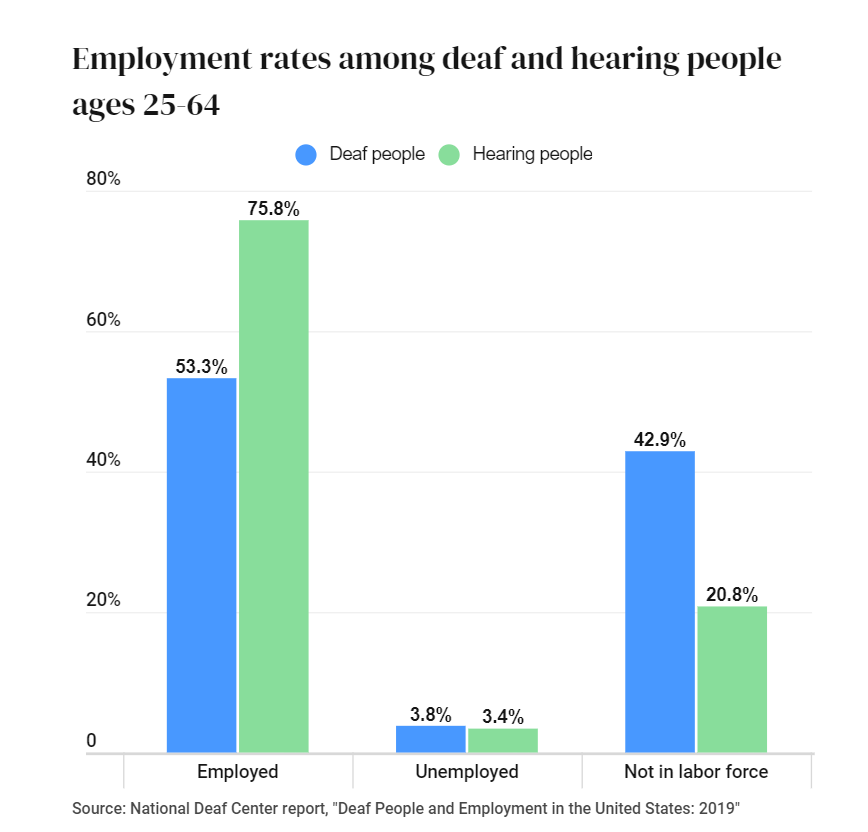Financial Assistance for Your Students and Families
Aug 14, 2022
Various resources exist to provide financial, medical and educational assistance to deaf/hard of hearing students and individuals, from state and federal government agencies to nonprofit organizations. These resources can be helpful when it comes to helping our students pursue a meaningful career and obtain the assistive technology they need. As my students enter their senior year, one of the things I want to make sure that they are educated about includes financial assistance for them as they leave the K-12 system and become independent adults. I also want to make sure that family members know these options as well as they prepare for their children to become legal adults. In addition, for my younger kids, I want to make sure that the parents are aware of different funding options that are available to them, as parents of children with hearing loss.
I recently came across this blog post from Bankrate, outlining some options for students and families. With permission, I'm sharing some of their information.
Key statistics
Some 48 million people in the U.S. have some degree of hearing loss, the Hearing Loss Association of America reports. And the number with moderate or greater hearing loss is expected to double by 2060, according to Johns Hopkins researchers. Based on data from the Centers for Disease Control and other government and advocacy organizations, key statistics include:
- Of people in the U.S. with a disability, 5.9 percent are deaf or have significant difficulty with hearing.
- About 55 percent of deaf people have additional disabilities.
- Two to 3 of every 1,000 children in the U.S. are born with detectable levels of hearing loss.
- The states with the highest populations of hearing disabled people are West Virginia (6.2 percent), Maine (5 percent), New Mexico (5 percent), Oklahoma (4.9 percent) and Arkansas (4.8 percent).
- About 14 percent of deaf people receive Social Security Disability Insurance, compared to 24 percent of people with a mobility or visual disability.
- The price of a hearing aid runs $1,000-$4,000.
- Only five states – Arkansas, Connecticut, Illinois, New Hampshire, and Rhode Island — require that health-care plans pay for hearing aids for adults and children.
- Only 18 percent of deaf individuals have a Bachelor’s degree, compared with 33 percent of those who aren’t hard of hearing.
- Just slightly more than half of deaf people ages 25 to 64 are employed, compared with three-quarters of those who can hear, according to a 2019 report from the National Deaf Center.

Financial Assistance for Families and Adults

Supplemental Security Income
I have many families that qualify for SSI. When my student turns 18, then these benefits may be able to go directly to them. Deaf/hard of hearing individuals who have limited income and resources may qualify for Supplemental Security Income (SSI), which is also administered by the Social Security Administration. The program provides monthly payments to cover things such as food, clothing and housing.
State agencies
The deaf and hard of hearing can also turn to state agencies for assistance with receiving hearing aids, assistive technology and rehabilitation services. I live in Wisconsin and work primarily with ODHH (the Office for the Deaf and Hard of Hearing) and DVR (Division of Vocational Rehab). While the scope of services differs from state to state, these programs provide a variety of valuable services. Among the functions are advocacy, information gathering and dissemination, referral to appropriate agencies, interpreting services, state-wide planning, job placement and development. There are approximately 38 state agencies of the deaf and hard of hearing.
Medicaid
In some states, Medicaid covers hearing services for low-income children and adults such as hearing aids, cochlear implants and hearing exams. Eligibility and coverage vary among states.
Telephone Equipment Distribution Program Association
Through state-run Telephone Equipment Distribution Programs, DHH students and individuals can receive free or low-cost telephone equipment with assistive technology to improve phone access. It's important and helpful to note that with the expansion of cell phone use and blue tooth capabilities, more options qualify for this program in some states. In Wisconsin, students with mild to profound hearing loss can receive a significant voucher every 4 years. There is no age limit and equipment that hooks to your phone like alarm clocks and alerting technology qualify. Not all states are as generous, but it's definitely worth looking into!
Bottom line
Many family members do not know of the available financial assistance programs available to them or how to get assistance for their children. When your students turn 18, they may be eligible for funds that can support them as they transition out of the K-12 system to independent living. Hopefully, this post will help you navigate some of these options so you can empower your students and their families with the options that are available to them!
To read the original article from Bankrate, go to https://www.bankrate.com/banking/savings/financial-guide-for-deaf-and-hard-of-hearing/.

